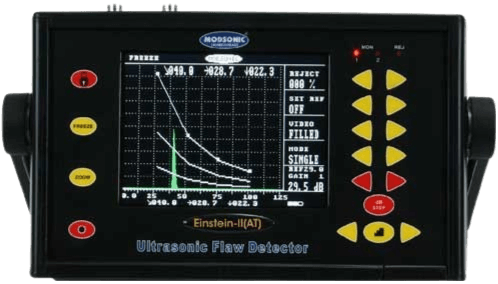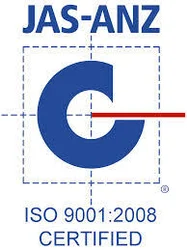Ultrasonic Testing

In ultrasonic testing, very short ultrasonic pulse-waves with center frequencies ranging from 0. 1-15 MHz and occasionally up to 50 MHz are launched into materials to detect internal flaws or to characterize materials. The technique is also commonly used to determine the thickness of the test object, for example, to monitor pipework corrosion. Ultrasonic testing is often performed on steel and other metals and alloys, though it can also be used on concrete, wood and composites, albeit with less resolution. It is a form of non-destructive testing used in many industries including aerospace, automotive and other transportation sectors.
Ultrasonic methods of NDT use beams of sound waves (vibrations) of short wavelength and high frequency, transmitted from a probe and detected by the same or other probes. Usually, pulsed beams of ultrasound are used and in the simplest instruments a single probe, hand held, is placed on the specimen surface. An oscilloscope display with a time base shows the time it takes for an ultrasonic pulse to travel to a reflector (a flaw, the back surface or other free surface) in terms of distance traveled across the oscilloscope screen. The height of the reflected pulse is related to the flaw size as seen from the transmitter probe. The relationship of flaw size, distance and reflectivity are complex, and a considerable skill is required to interpret the display. Complex muti probe systems are also used with mechanical probe movement and digitization of signals, followed by computer interpretation are developing rapidly.
Ultrasonic examinations are performed for the detection and sizing of internal defects, flaws or discontinuities in piping, castings, forgings, weldments or other components. Exact sizing techniques have been developed to detect and monitor progressive cracking in a variety of equipment.


